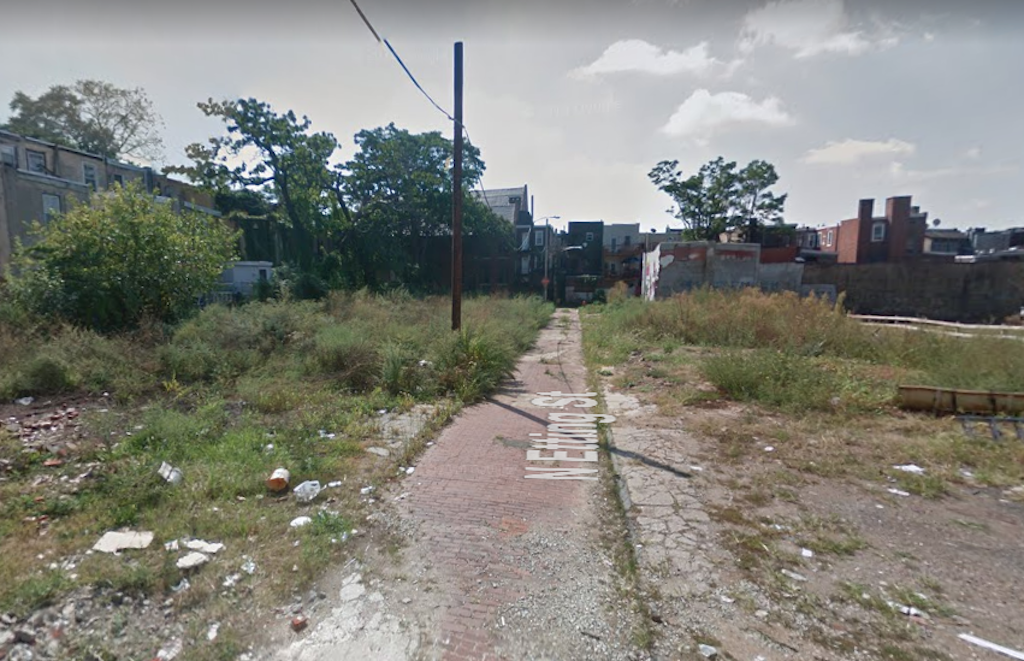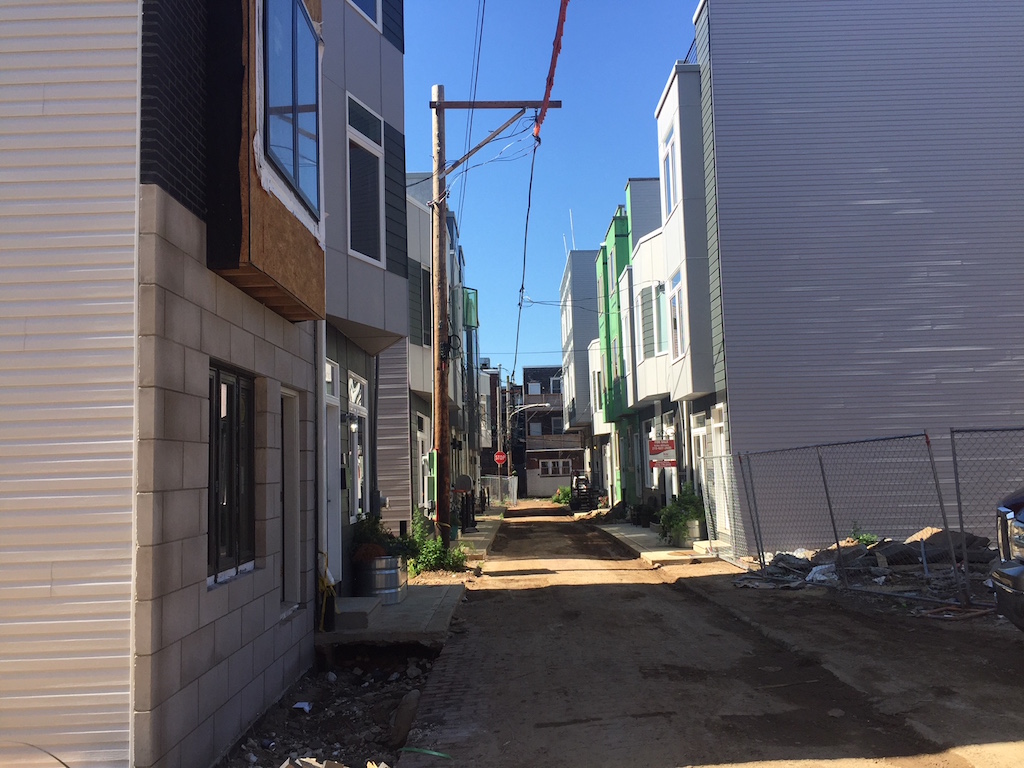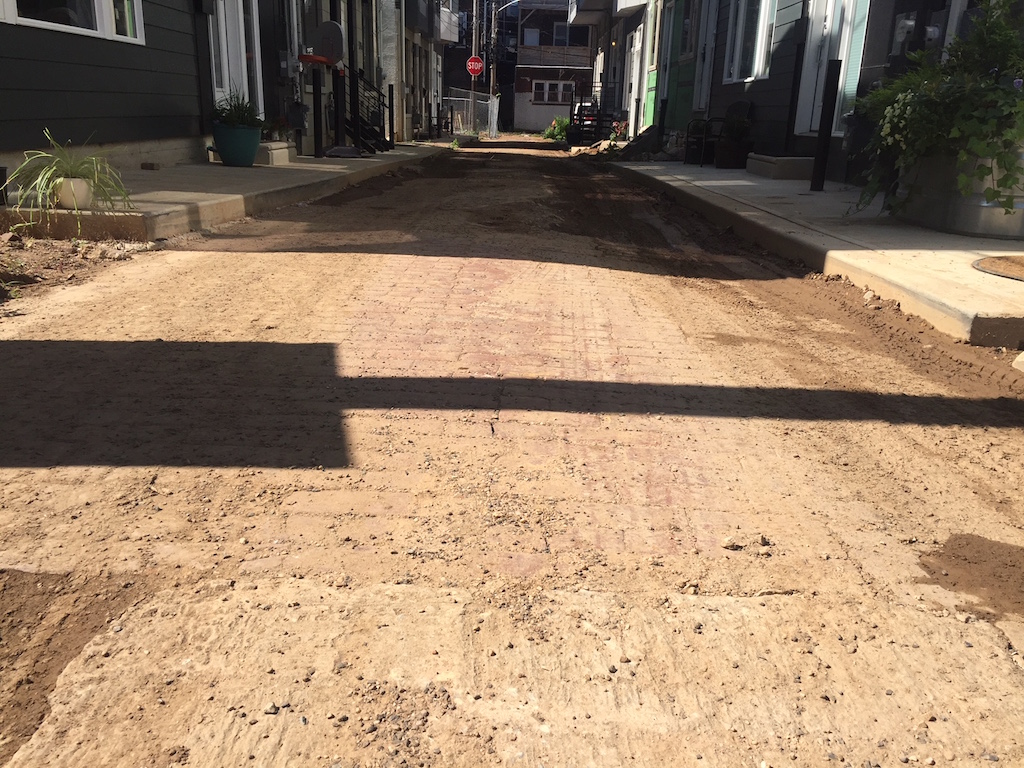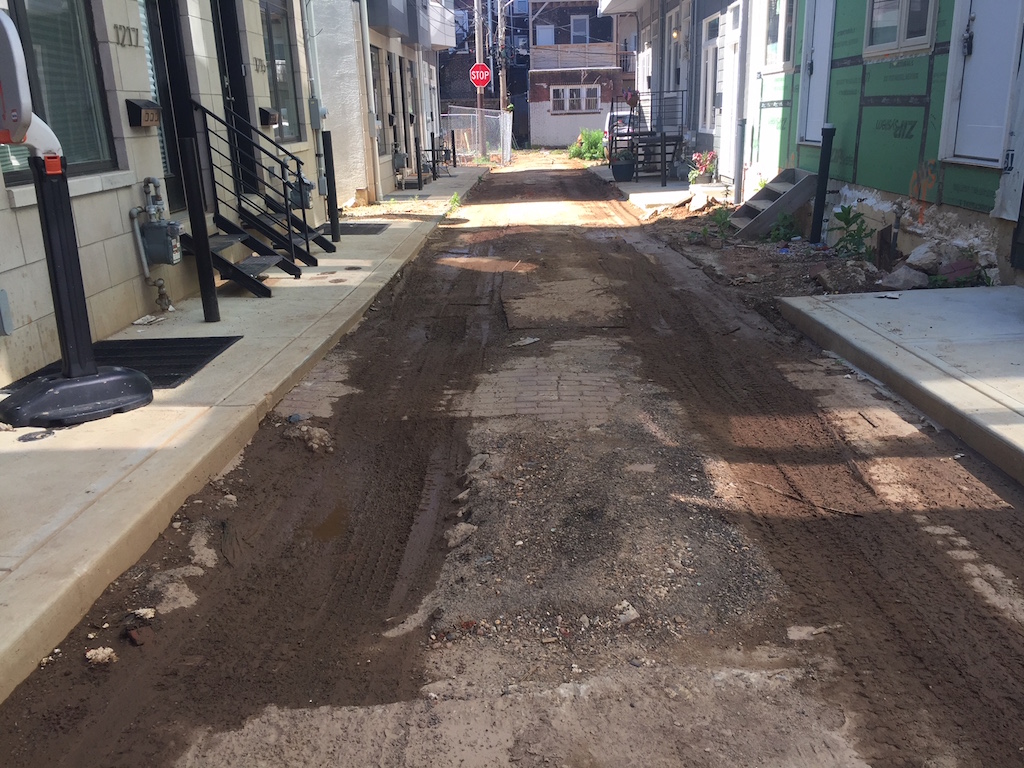It was just a few years ago that the 1200 block of Etting Street was sitting empty and desolate, a Brewerytown block with nary a building. But times have changed, and they’ve changed rather quickly.


The transition is nothing short of amazing, as the block has gone from zero buildings to over a dozen new residential structures. The block has been developed with a mix of market rate homes and subsidized workforce housing units, with the market rate units topping out at $370K and the affordable units selling at a fixed $230K. Even now, additional homes are still under construction, so the transformation of the block isn’t yet complete. Another thing to keep in mind as this block’s redevelopment enters the home stretch is the street itself, which you might have noticed isn’t a standard issue asphalt Philly street.


Like Jewelers’ Row, this block is traditionally paved in red bricks. Why did this street maintain this condition while all the surrounding streets were converted decades ago? We couldn’t tell you. What we can share is that this street surface, along with hundreds of other streets across town, is considered part of the historic fabric of the city and is therefore listed as part of the Historic Street Paving Thematic District and protected from repaving. It also means that the Water Department and the Streets Department are supposed to work together to ensure that when plumbers dig up the street to run water and waste lines for new construction, they restore the red brick to its appropriate condition. Clearly, that hasn’t happened even a little bit on the 1200 block of N. Etting Street.
Eventually though, the City realized that someone dropped the ball and decided that one of the last developers left on the block should rebuild the entire historic street even though they were only responsible for a portion of the damage to the street surface. This developer pushed back against this request, and looked to get the block removed from the list of historic streets, citing economic hardship and expressing the sentiment that most of the damage was done before they even showed up on the block. The matter is further complicated by the fact that this developer has built the workforce housing on the block and therefore has a limited margin to spend on factors beyond the anticipated scope of their project.
The Historical Commission met last month, and decided to keep the street on the historic list. The minutes indicate the possible need for a new water line on the block, suggesting that the Water Department could bear some of the costs of restoring the street, along with Streets and the developer. Also, the Historical Commission only has an advisory role when it comes to street repaving, in contrast to their role with buildings on the Historic Register. So if the Streets Department ultimately decides that repaving the street with asphalt is the appropriate course of action, the fact that the block remains on the historic list won’t prevent that outcome.
From where we sit, we think it would be pretty cool for the street to get repaved in red brick. But we also appreciate that this would come at a cost, and it seems pretty unfair to make a single developer bear those costs after multiple developers have built homes on the block. In the end, if the City is willing to pick up most of the tab, we expect the street will return to its old red brick glory in the next few years. Otherwise, we predict lawsuits. And eventually, asphalt.
